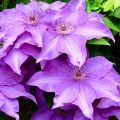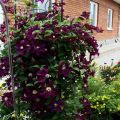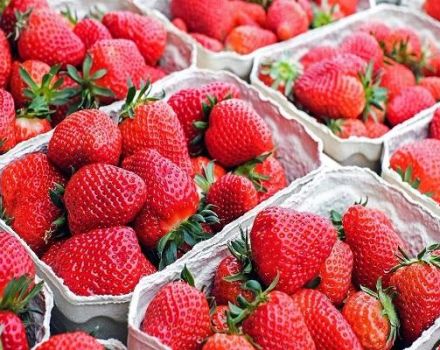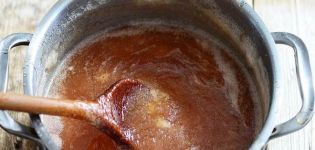For what reasons clematis does not bloom and methods for solving the problem
Representatives of the Buttercup family - clematis - are popular flowers for vertical cultivation, decorating arches, arbors, fences. During flowering, the climbing shrub is covered with lush flowers. For large and beautiful flowers, the plant fell in love with gardeners. But it often happens that the bush does not pick up buds or throws them off. Why does clematis grow poorly and does not bloom? Consider the mistakes of novice gardeners.
Reasons for poor flowering of clematis
With minor failures in the care system, the wrong choice of variety and place of planting, violation of agricultural technology or other additional factors, clematis stops blooming and picking up buds. Particular attention should be paid to the choice of planting site and preventive measures for flower care, selection of the right variety.
Improper fit and care
Clematis is a liana plant, for growth it needs a support in the form of a wall, a fence, an arch. The best place to plant a plant is in a sunny area, protected from strong winds and drafts.
Rules for planting flowering vines:
- Loose nutritious soil with a neutral ph, moisture stagnation at the roots is unacceptable.
- When planting, they dig a deep hole with a diameter of 70 centimeters.
- Drainage is laid out at the bottom of the planting pit.
- The distance between plants is 1 meter.
- When planting, a mixture of mineral-organic fertilizers is applied to each hole.
Important! When planting, the root collar of clematis should be placed 15 centimeters below ground level, the plant needs to be spilled regularly.
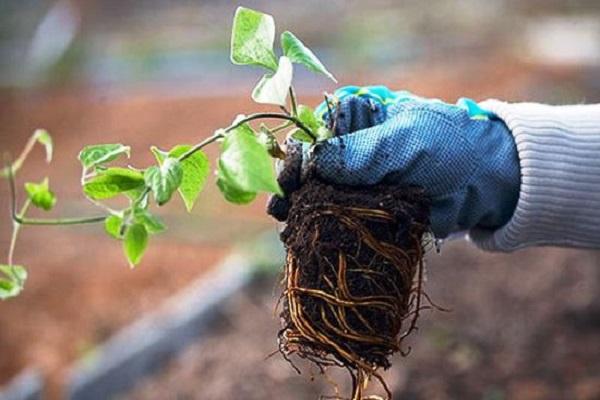
Clematis does not bloom in acidic soils. If the soil on the site is acidic, it is necessary to carry out liming with dolomite flour or shell lime. It is not recommended to plant flowering vines in swampy areas and in open areas. In the evening and in the morning, the plant needs shade. Watering is carried out at the root, without droplets of liquid falling on the leaves and stems.
Lack of nutrients and aging of the bush
Clematis can grow in one area for more than twenty years. At about the tenth year of life, the plant begins to age, as a result of this process, the diameter of flowers and their number decreases. This process is inevitable; as a preventive measure, it is recommended to do pruning and fertilize. If these measures are not enough, then it is better to transplant clematis.
A shorter flowering period is often associated with a lack of plant nutrients.Blooming liana needs feeding from the second year of cultivation, otherwise the plants grow poorly and do not grow buds.

Fertilization tips:
- in the spring, nitrogenous fertilizing is introduced;
- during the budding period, phosphorus is needed;
- after flowering, the bushes are fed with organic complexes;
- before winter, clematis spud and mulch with humus.
In order for the plant to have enough nutrients, it is necessary to regularly loosen the soil and remove weeds, otherwise the weeds will take most of the fertilizer applied.
Diseases and pests
The main enemies of clematis are nematodes, aphids, slugs, mealybugs. These pests can pass to the flower from other plants. Pest control and protection measures:
- spraying flowering vines with insecticides;
- collection of insects by hand, introduction of poison from rodents;
- wood ash, tobacco dust, mustard powder are used as natural remedies.
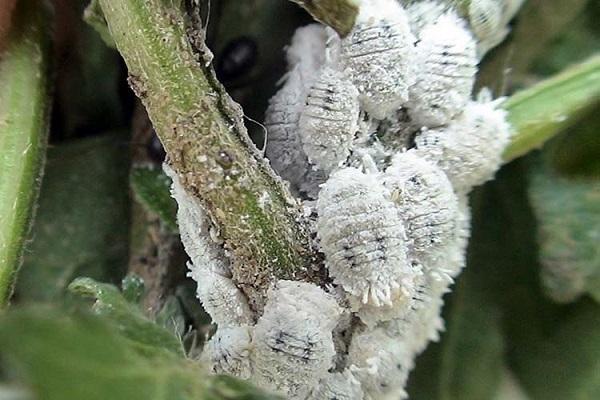
Rust, fusarium, gray rot, alternaria are the main infections that clematis is prone to. As a rule, only the tops of the vines suffer from fungal ailments. Ways to fight and treat infectious diseases:
- treatment of bushes with fungicides;
- adherence to landing dates;
- preventive pruning;
- moderate watering;
- shelters for the winter;
- mulching the soil with a mixture of wood ash and sand;
- preventive spraying with an aqueous solution of iodine.
In order not to start diseases, it is necessary to regularly inspect plants for signs of fungal diseases and pest attacks. Watering should be done with warm water in the morning or evening.
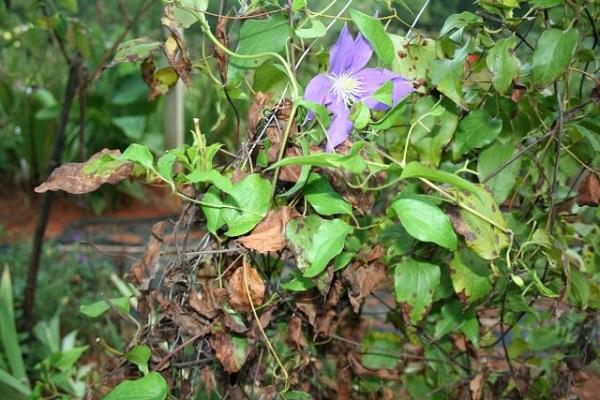
Additional factors
Clematis may refuse to grow and flower for the following additional reasons:
- sharp jumps in ambient temperature;
- frosty winter with little snow without shelter;
- lack of regular care;
- wrong landing site;
- variety unsuitable for growing in the region.
All of these factors affect the immunity and well-being of clematis. Without shelter, a blooming liana can winter only in warm southern regions.
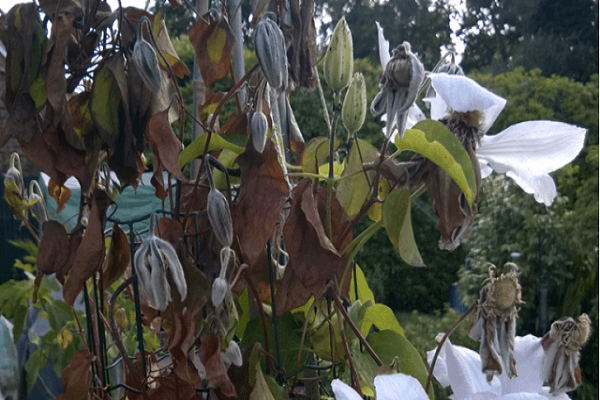
What to do to make clematis grow and bloom?
Having found out the reason for the poor growth and flowering of clematis, it is necessary to proceed to its elimination. Errors in care are corrected, with a poor choice of location, the plant is transplanted, in the presence of diseases and weak immunity, the bush is fed.
Two-time feeding
In the period from April to September, the plant must be fed. There are two main stages of fertilization:
- before flowering (during budding);
- after flowering.
In the first stage, it is important to add nitrogen-containing fertilizing. Experienced gardeners water the clematis bushes with a mixture of an infused but diluted solution of mullein or bird droppings with wood ash.
In the second stage, it is important to add a phosphorus-potassium complex; on soils with high acidity, watering with milk of lime is additionally carried out.
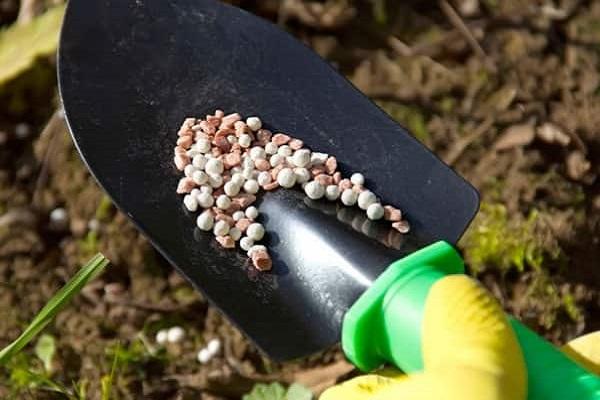
Stimulants
To help clematis during the flowering period, growth stimulants are used. Bushes become stronger, well leafy, completely covered with large flowers. As a rule, humates are used. Epin and Zircon are distinguished by increased efficiency.
Watering
The average frequency of watering clematis bushes is 2 times a week. Pour 20-30 liters of warm water under one plant. There is a well-known trick: do not pour water into the center of the bush, dig a small groove next to the stem, into which the flow of liquid is directed.
During periods of heat and drought, the amount of watering is increased. Do not water the plants at noon - during the period of increased activity of the sun's rays.
After irrigation, loosening and mulching with peat or humus are carried out.
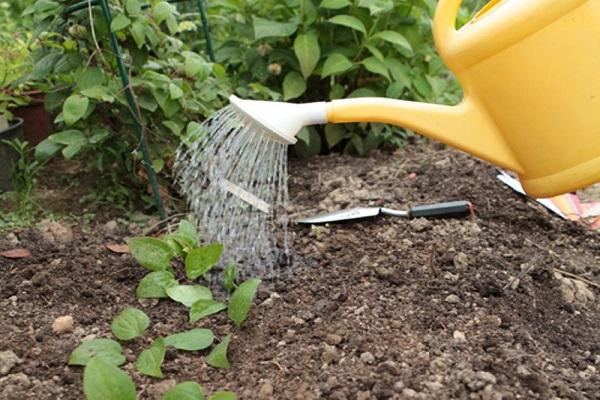
Pruning
Bush pruning is a necessary activity for plant care. The pruning method depends on the type of clematis. There are 3 varietal varieties of flowering vines:
- clematis blooming on last year's shoots;
- clematis blooming on new shoots formed on last year's stems;
- clematis blooming on new shoots.
It is impossible to cut flower-bearing shoots. Before starting the procedure, the plant must be removed from the support. First of all, all old and dried branches are cut out. Further pruning is carried out according to the recommendations of the variety and plant group. The cleaned bushes are bent to the ground, covered with spruce branches or covering material for the winter.
Transfer
Transplanting clematis is often not recommended. For about 7-10 years, the plant feels good in one place. The bush needs to be transplanted immediately, in the case of an incorrectly chosen growing place.
The transplant is carried out only after the plant has been removed from the support; pruning must be done if the movement of the bush is organized in the fall. The best time to transplant is early spring.
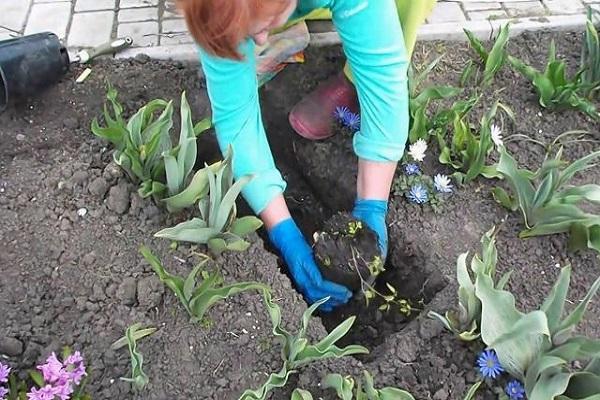
Preventive actions
In order for flowering vines to delight gardeners with abundant and lush flowering, healthy and vibrant foliage, it is recommended to carry out the following preventive measures aimed at maintaining the life of the plant:
- application of organic and mineral fertilizers;
- hilling plantings with mulching of bushes with humus;
- watering with warm water in the evening;
- treatment of plants with fungicides before flowering;
- sheltering bushes for the winter;
- regular inspection of plantings for signs of fungal diseases and attacks of insect pests.
It is important to remember that flowering liana is a heat-loving plant and needs additional shelter for the winter. The flower does not tolerate excessive moisture and moisture stagnation at the roots. Pruning lianas must be carried out in order to stimulate flowering, as well as to bring the decorative shape of the bush. Frequent transplants are not recommended. The presence of a support when growing clematis is required.
Subject to agricultural technology and proper care, clematis will delight gardeners with lush flowering for decades.


